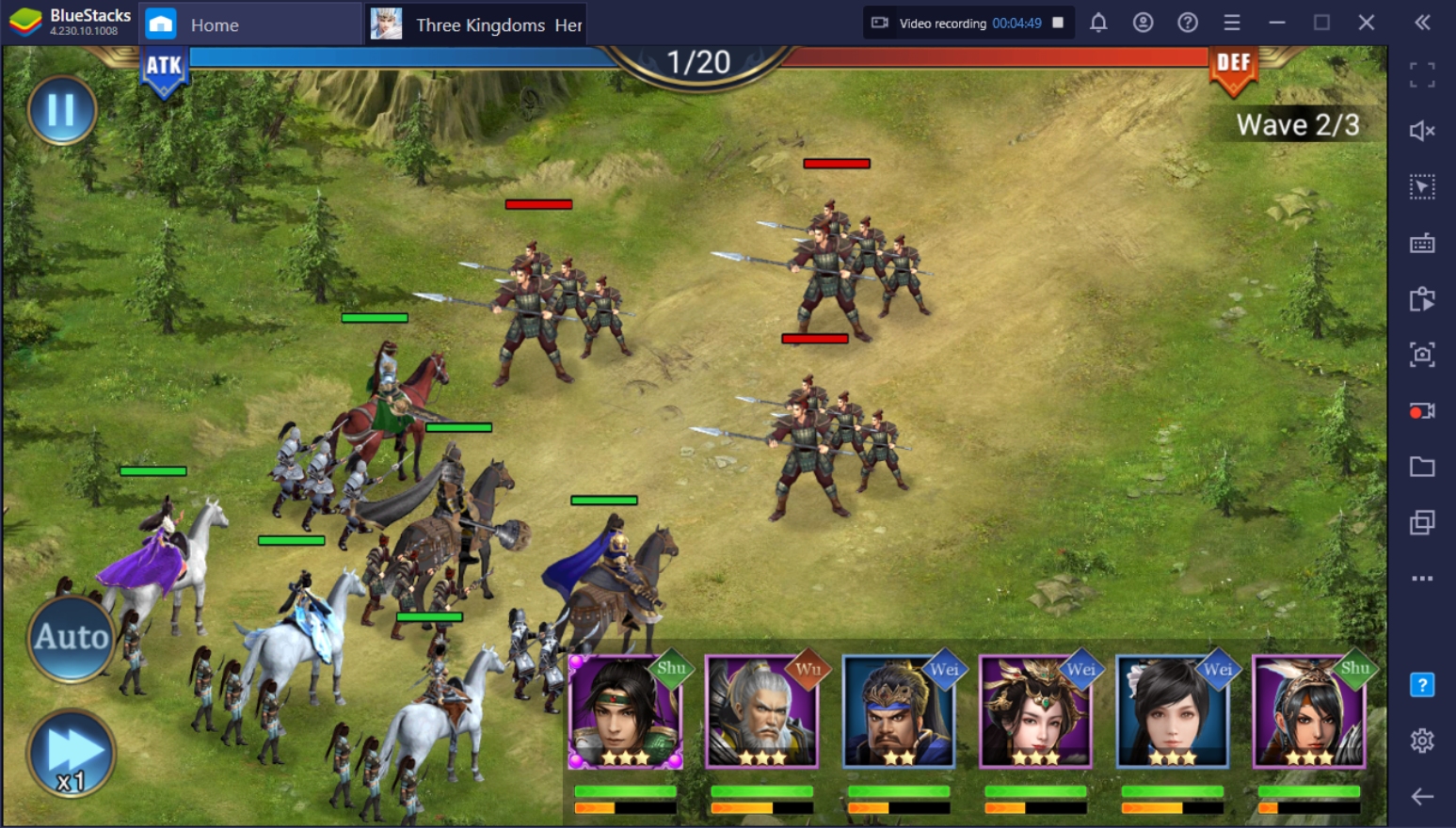Three Kingdoms: Heroes Saga on PC - Economy Guide
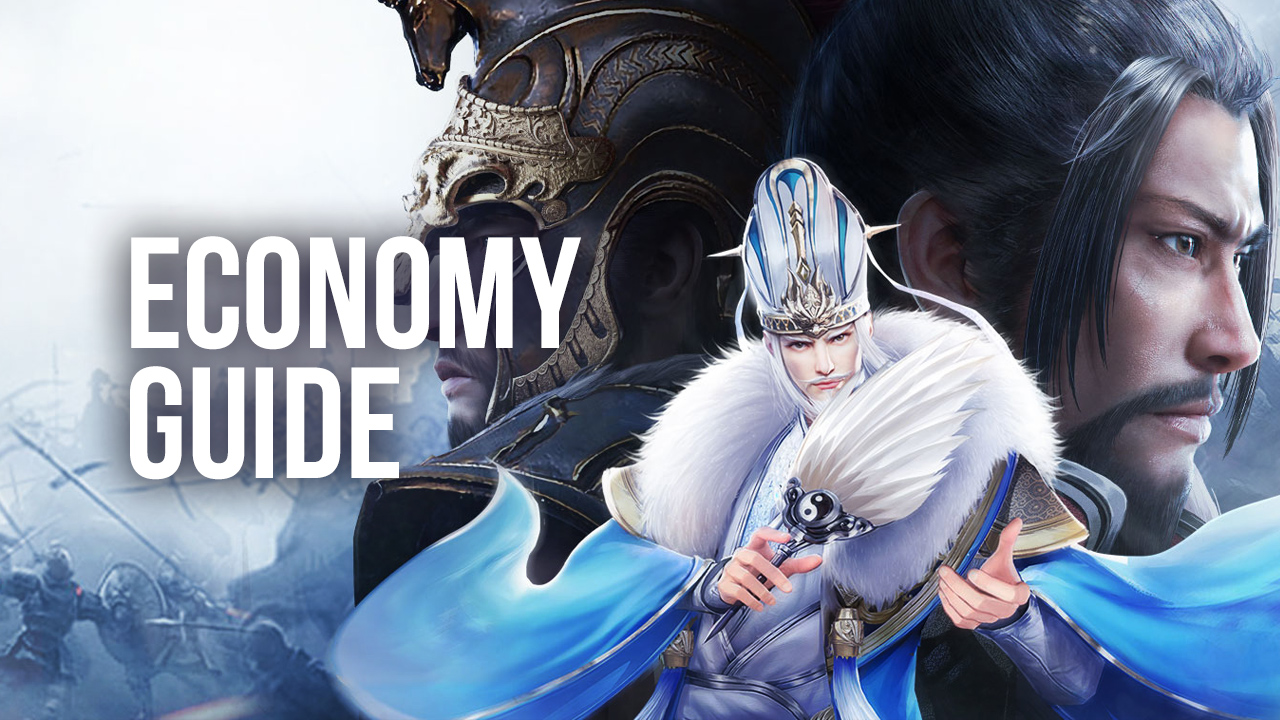
Three Kingdoms: Heroes Saga places heavy emphasis on your resources towards your city’s advancement. Unlike most mobile real-time strategy games, resources aren’t spoonfed to you in copious amounts. Knowing how to get the most resources will help you secure your city’s future and allow you to have more options moving forward. Learn how to manage your resources by figuring out what you need to prioritize in this economy guide.
There are multiple types of resources in Three Kingdoms: Heroes Saga, all of which are relatively difficult to come by when you’re not a premium player who can freely buy the supplies you need using ingots. But if the goal is to acquire the resources to make your kingdom just relevant enough to compete, you won’t need to spend real money on this game. Master the basics of this game and any other similar real-time strategy game by gaining general knowledge about the genre.
Explaining the Different Resources
-
Wood
Wood is your most abundant resource in this game; it’s usually the one that’s spent the least often. Wood is used to upgrade buildings, but that’s pretty much the extent of what it’ll be spent on. You can produce this resource by building logging camps on the outskirts of your city. Since there is an abundance of it, wood shouldn’t be at the top of the priority list, but it has minimal uses. That being said, you’ll find yourself with too much of it during the early stages of the game, when you’ll be focused on other things.
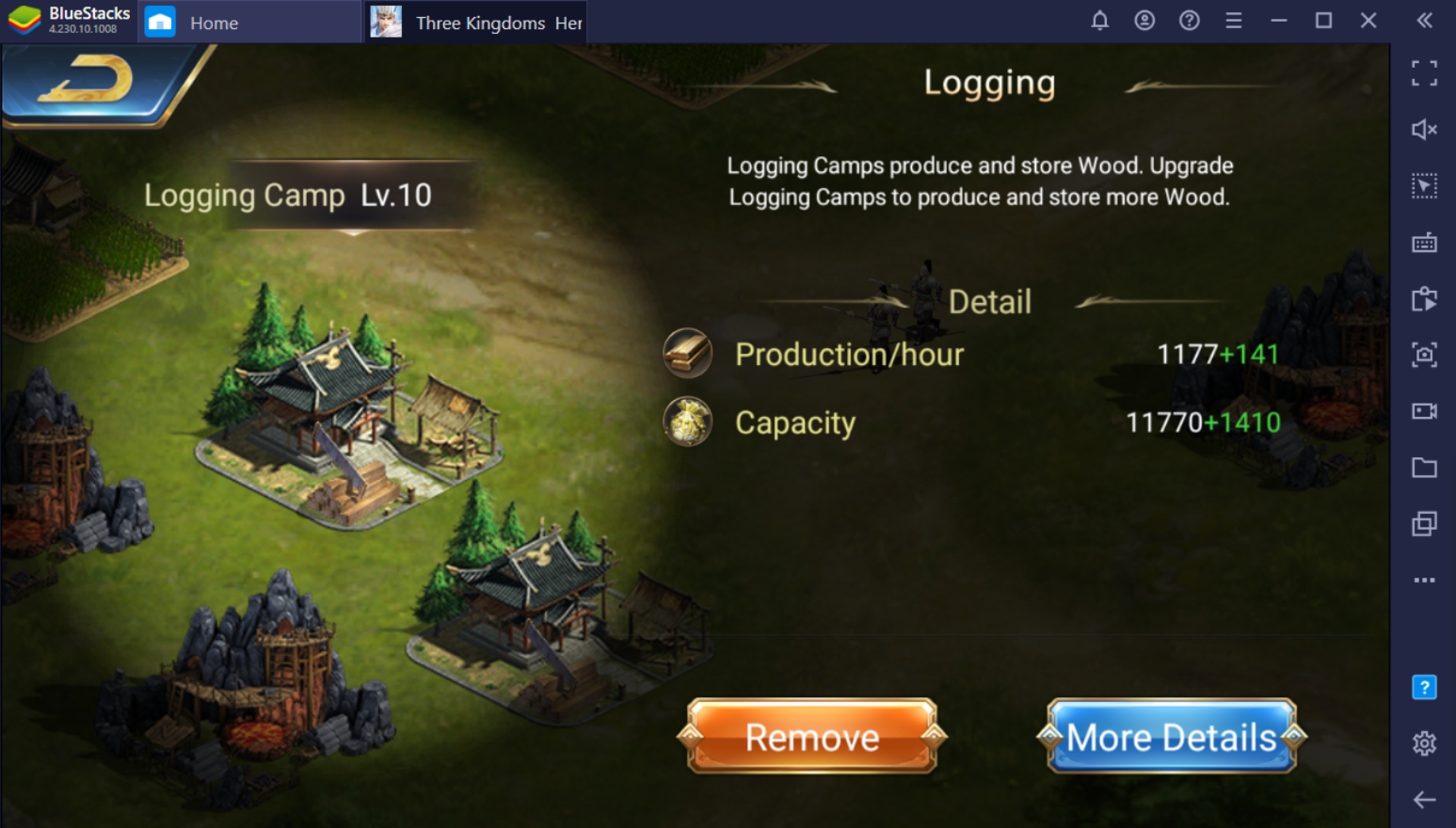
When building your resource camps, you’ll want to minimize the logging camps to only three or four until Palace Level 10; you won’t have much use for them in the game’s early stages anyway. The Iron Mines and Farmlands, on the other hand, will need more plots, since the initial stages of the game will require a lot of Food and Iron when ramping up your Military. If you somehow find yourself short on wood, you can use your item stash or ingots to buy it too.
-
Food
Food holds a high value in this game since it’s used to train soldiers, which you’ll need an influx of. It’s also used in most building upgrades and research, so it quickly exhausts itself in the game’s early stages. You’ll find yourself out of food before you know it, especially if you’re surrounded by aggressive neighbours who attack your city. Because of this, you’ll need to have abundant farmlands in your city.
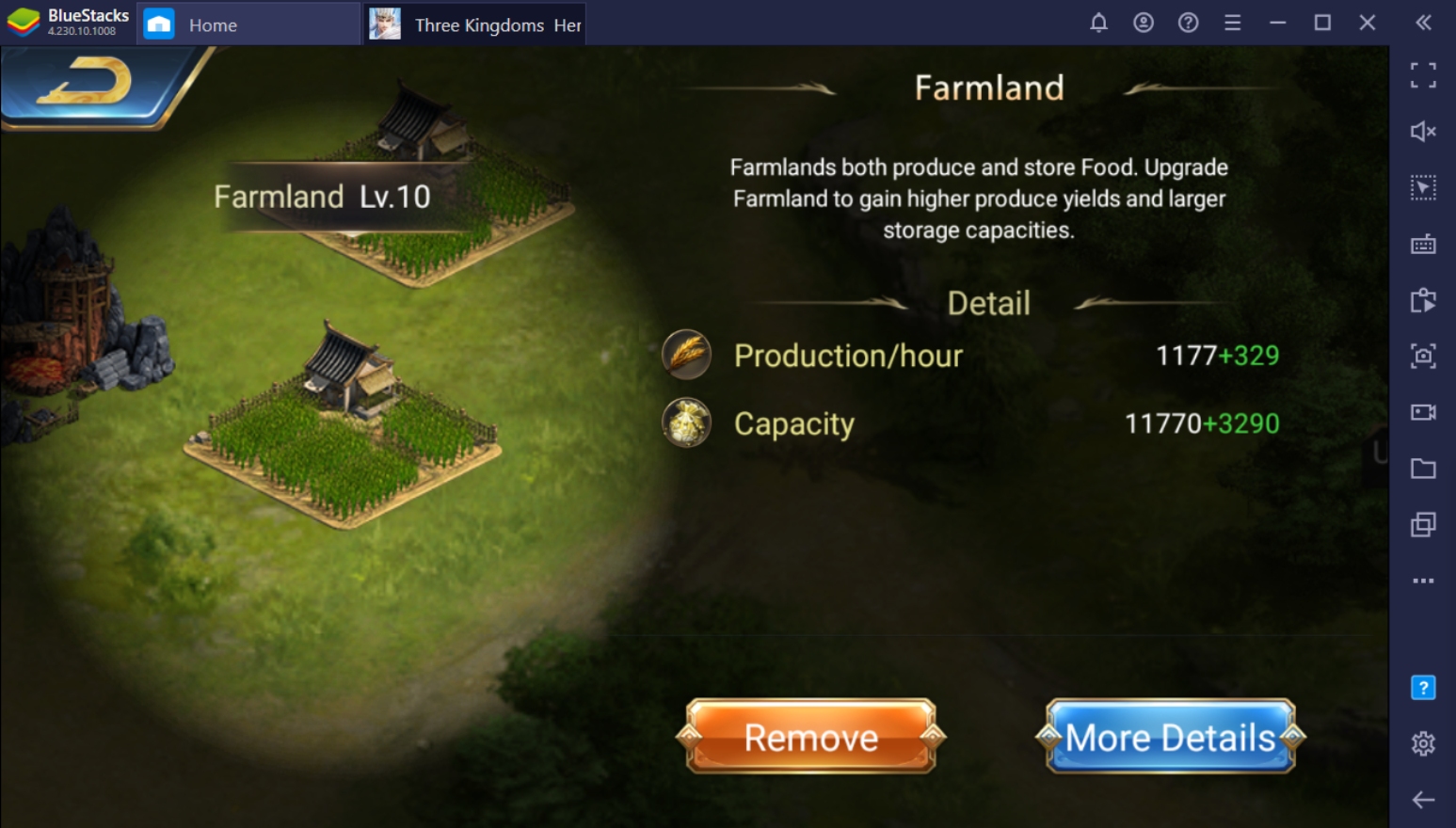
When building Farmlands, you can have the same ratio as your Iron Mines with 6 Farmlands and 6 Iron Mines or 7 Farmlands and 5 Iron Mines if you’re in desperate need of food. You’ll never be able to get enough food even if you try collecting your resources every hour, so you’ll need to find plots in the over world to get additional food. The same logic goes with Iron Ore: looking out for mines in the over world will give you extra resources that you can’t farm yourself.
-
Iron Ore
Iron ore is the most demanding resource of all – it’s used in almost every aspect of your kingdom, aside from upgrading Iron Mines themselves. You can prioritize upgrading the Iron Mine, but the demand will eventually fall off in the mid-game. As mentioned, you should try balancing your resource plots between Food and Iron in the early stages of the game, but if you’re confident with your wood production, then you can put off doing this until the late-game.
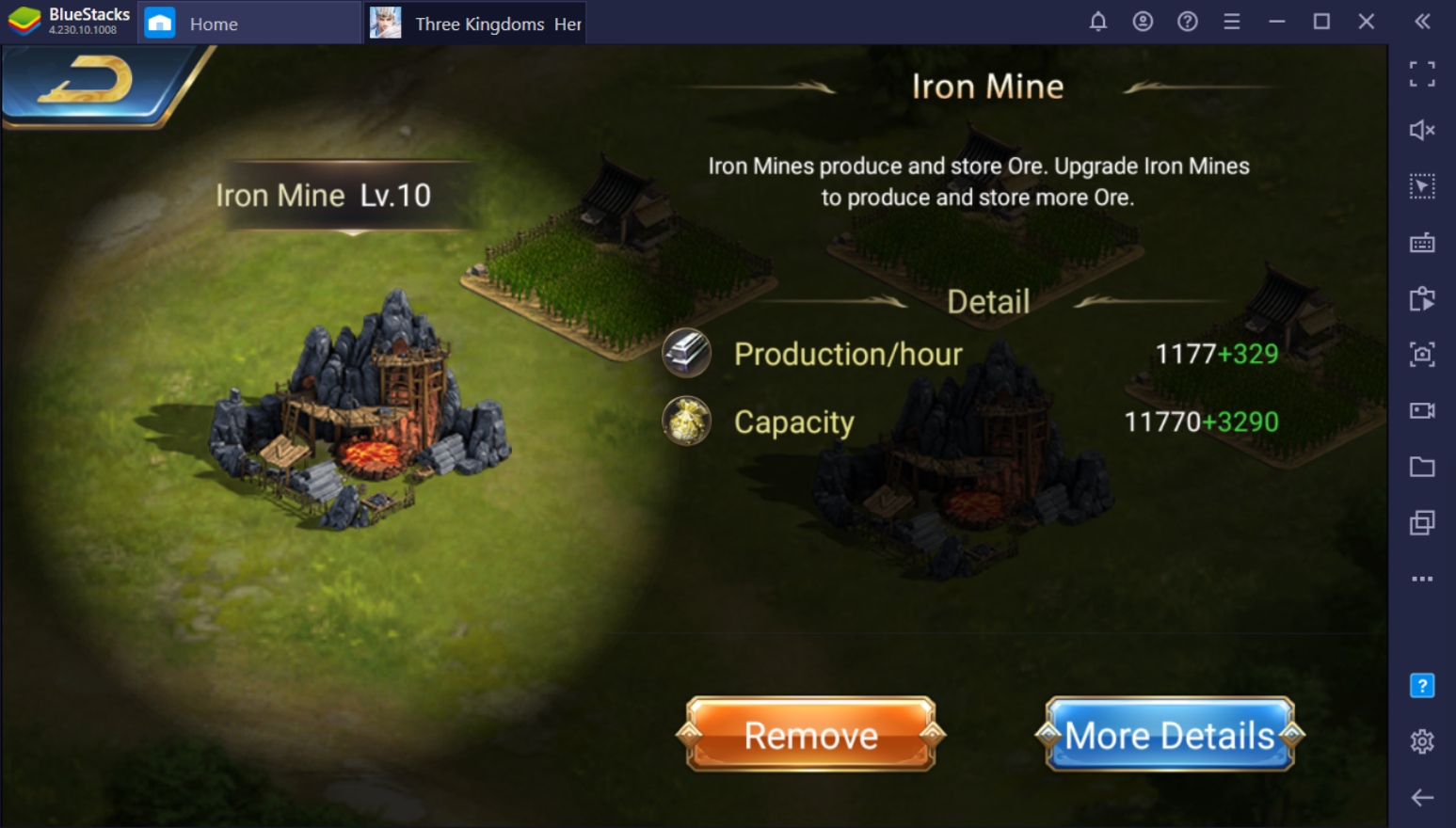
-
Coins
At the start of the game, you might think that coins play a minimal role in the game. Don’t be fooled; coins are tough to come by once you unlock the blacksmith and want to upgrade hero weapons. Coins are also used in the market when you want to buy useful items like resource packages or cool down refreshers. Unfortunately, it’s quite the challenge to collect coins, since you can only build a few of them at a time.
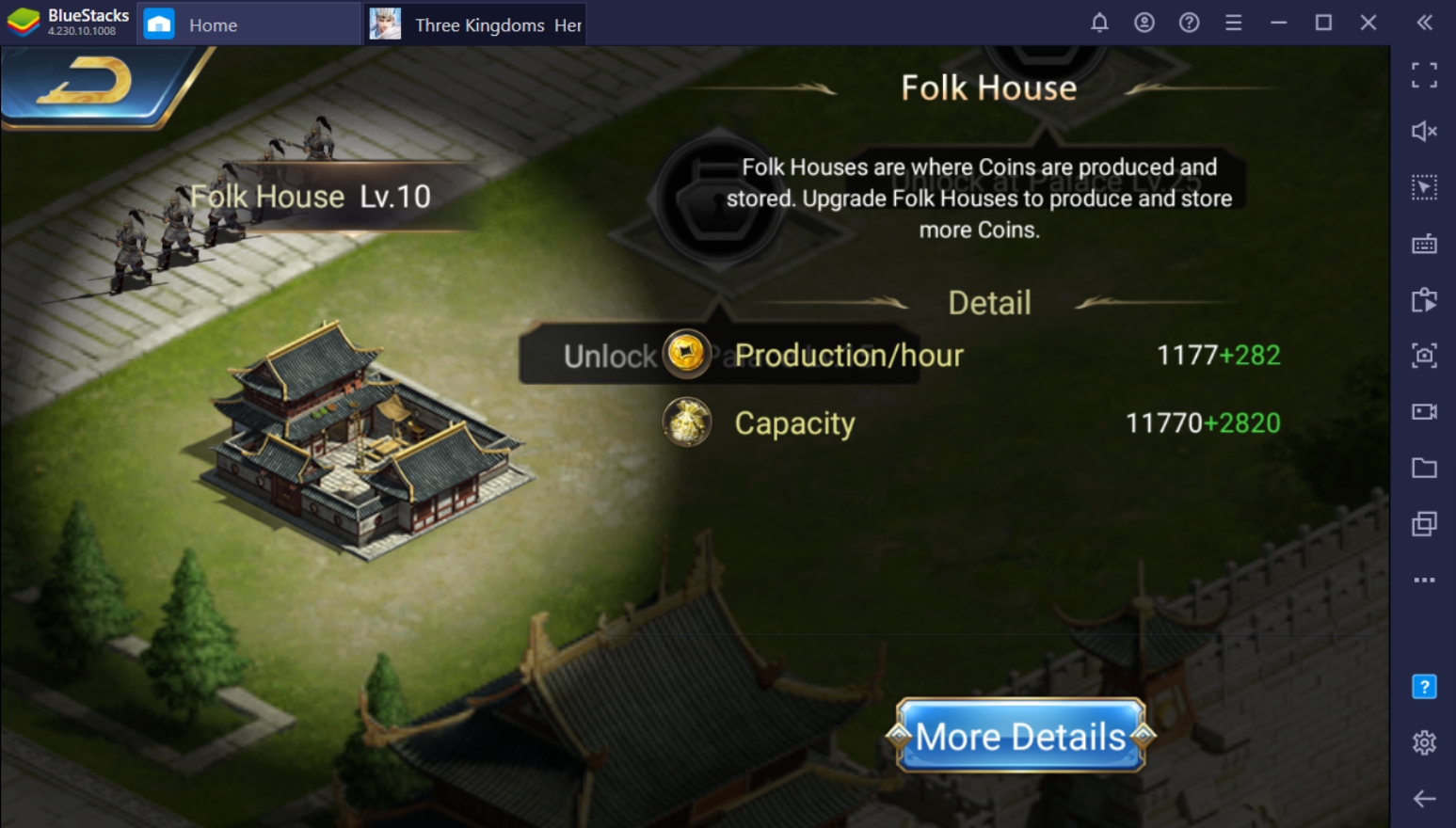
-
Ingots
Ingots are the premium currency in the game and are extremely useful to have. You can get ingots by completing missions or when the game developers give it as gifts to the players. Don’t hesitate to use these ingots to finish upgrading selected facilities instantly or buying a second builder slot for your kingdom. Ingots might seem limited, but if you manage them correctly, you can have a seemingly endless supply to last you for the rest of the game.
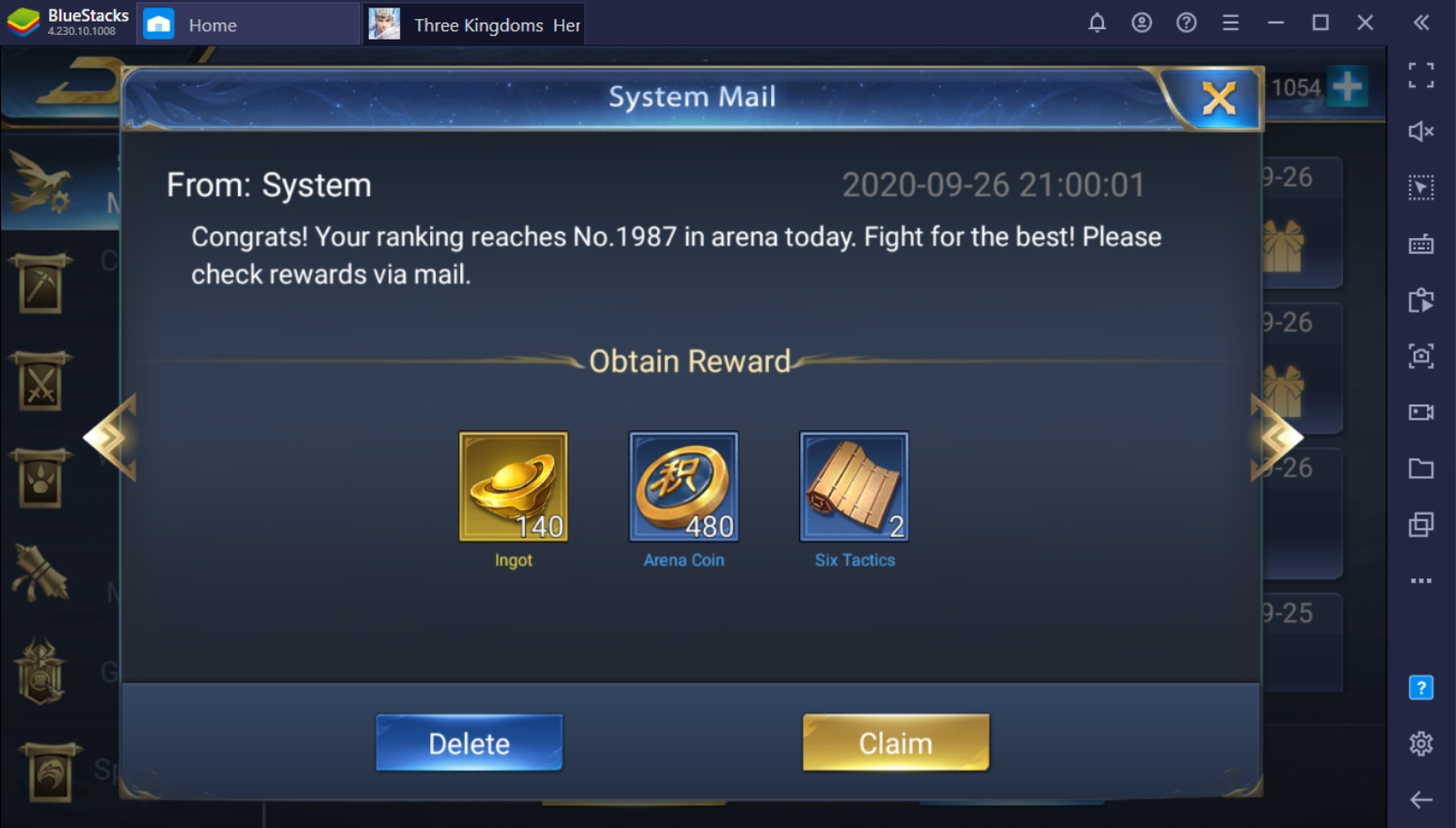
Upgrading Your Resource Buildings
In the Beginner’s Guide, it was already discussed how important it is to match the level of your resource tiles with the level of your palace at all times. This is to ensure that your production is always at 100%, and you won’t drag behind when it comes to meeting your kingdom’s demands. Ensure that your resource buildings are the first to reach their max level after upgrading your palace to the next stage.
Researching in the Academy
The Academy can significantly help you boost the production of your resources in the game. When you’re having difficulty producing resources to train or upgrade buildings, research everything on the Interior tab to their maximum level. You can upgrade the Cutting Axe last since the other three resources (coin, food, iron) have a higher priority in the game. If you don’t need to get a massive boost in resource production, you can always research the Military Tab instead.
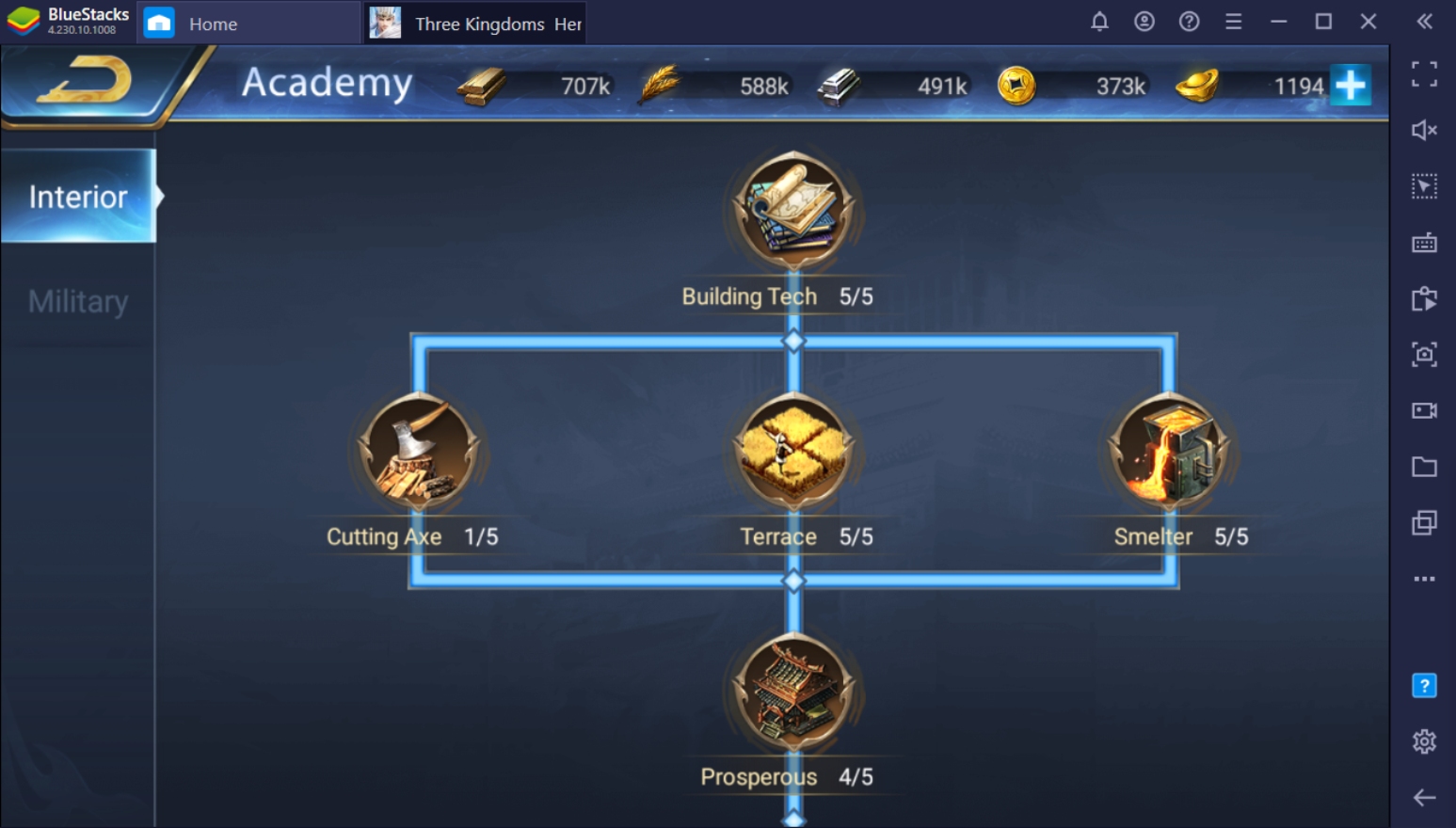
Maximize the Use of the Items in Your Bag
There are plenty of useful items in your bag that will speed up gathering resources like the Resource Production Bonus Tickets and the Resource Packages; these directly offer the resources you’ll need. You should only use these items when you need them; otherwise, having too many unnecessary items can lead to hostile players targeting you to raid your city.
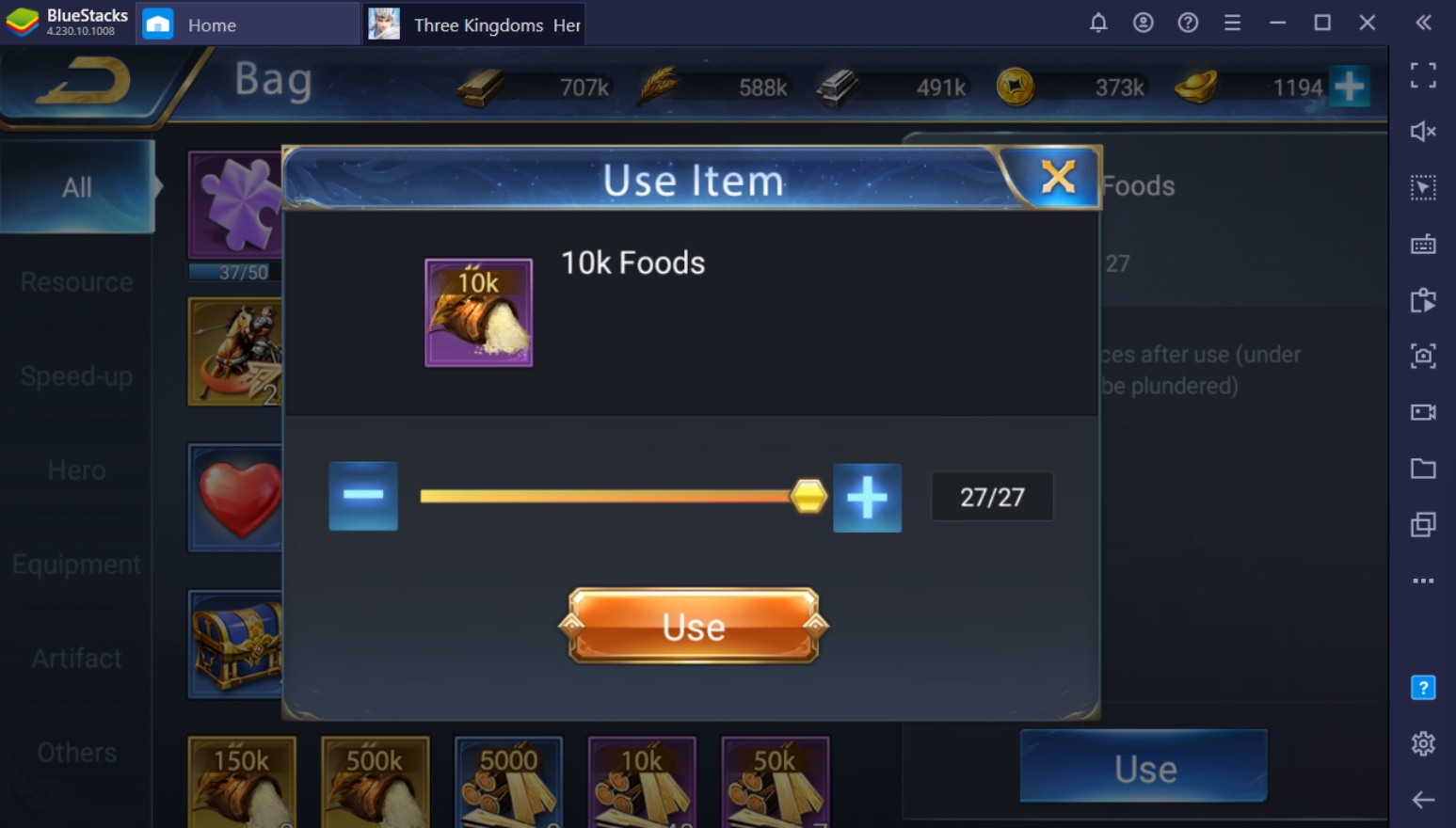
Upgrade Your Warehouse
The warehouse protects a percentage of your resources from being looted even if you are defeated in an attack. Ensure that your warehouse is always at its max level unless you want your resources to get constantly stolen by an enemy kingdom. Enemy players will lose interest in attacking you once they realize that they don’t gain anything from the attacks, anyway.




